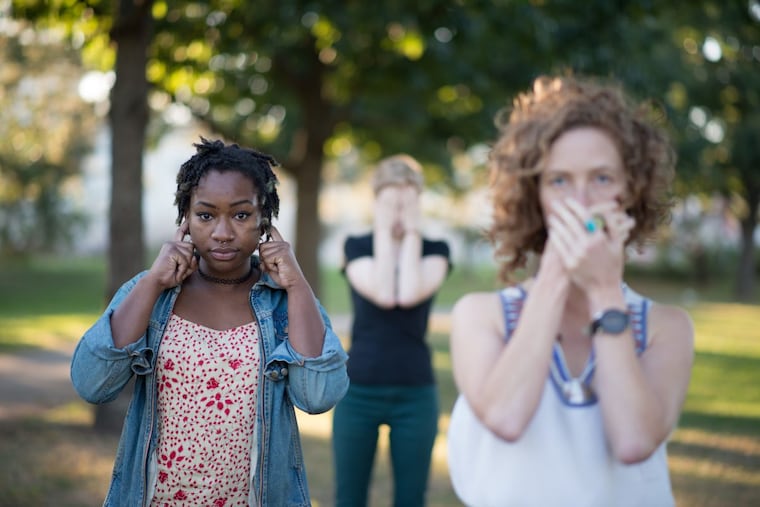Azuka Theatre's 'The Gap' is a female exploration of chasing answers
The tension of the piece rests on whether lost memory can be recovered or whether it's better left buried.

Emma Goidal's drama The Gap, Azuka Theatre's 17th world premiere, is a powerfully contemporary and profoundly female work not only in its subject matter but in its excellent cast, with Rebecca Wright's direction managing to keep the fragmented narrative flowing smoothly.
This is a play about sisters, secrets, and children who have experienced wounds both to their bodies and their psyches at a very young age. Because they were so young, there are gaps in their adult memories, hence the title.
Despite its sometimes overwrought emotionalism, the play begins in a joking mode, treating a dysfunctional relationship between adult women with what at first seems like a sitcom cliche: Lee (Maggie Johnson, superb in a demanding role) believes she has been abducted by aliens. She also believes her older sister Nicole (Alice Yorke) is refusing to reveal a crucial piece of information, one that would somehow untie the knot of her life. Their perky mother (Genevieve Perrier) is no help, and Nicole's boyfriend (Jaime Maseda) seems to be just a goofy add-on to the drama.
Lee is an artist who creates highly personal performance pieces, a new variation on old-fashioned psychodrama combined with a New Age overlay. In order to recover the secrets buried in her psyche, Lee hires an actor, Nina (Ciera Gardner), to portray her life. The relationship grows more and more intense until Nina, to save herself, needs to withdraw, leaving Lee without a surrogate. The tension of the piece rests on whether lost memory can be recovered or whether it's better left buried. Lee finds herself on the verge of some discovery, a "slippery and sad" place.
Michael Kiley's sound design adds to the tense atmosphere, although the set by Apollo Mark Weaver, with its sliding silvery screens, seems unnecessary — as do the astrological/astronomical projections by Jorge Cousineau literalizing what is obviously fantasy.
To be abducted by aliens, is, we learn, to become an alien, to become alienated from life and emotion and self. To be an artist is to risk unleashing raw material that may free you or cripple you. In The Gap, Goidel bravely, if sometimes bafflingly, explores that dangerous terrain.